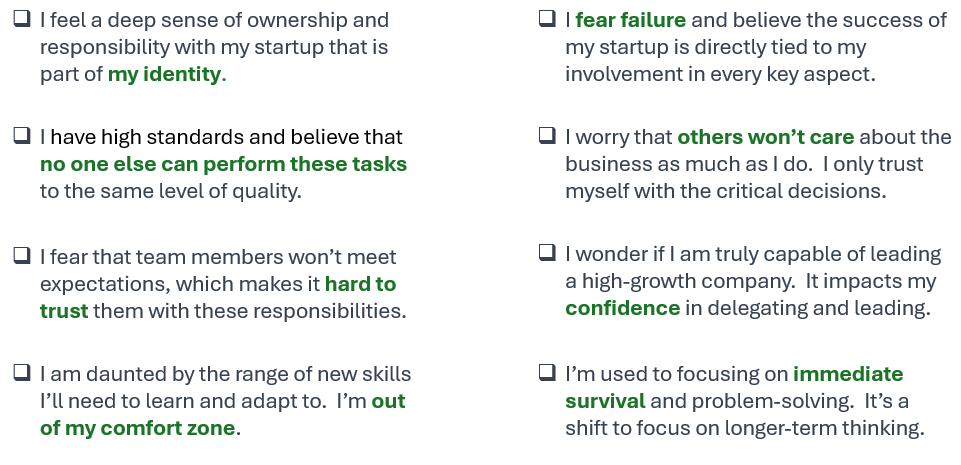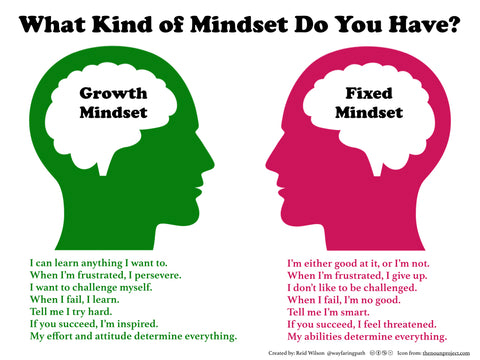I recently asked a seasoned Investor in B2B SaaS businesses:
What is the one thing that differentiates the Founders who make it to exit and those who do not?
Quick as a flash, the answer came straight off the tongue:
Whether the Founder can make the shift from do-er to leader.
That is my belief too.
There will be many missions you’ll go on as you aim to get closer to your vision of the future. But as a first time Founder CEO, moving from ‘doer’ to ‘leader’ is mission number one.
And it will stretch you like you’ve never been stretched before.
WHY does it matter so much?
You’ve now got the funding. Whether it’s £2m, £12m or £22m, the expectations are the same. As Paul Graham, the founder of Y combinator, simply states in his essay Startups=Growth, a startup is a company designed to grow fast.1
Elizabeth Zalman and Jerry Neumann neatly describe the shift:
You need to go from developing and selling a product to building a machine that develops and sells a product. A machine takes a small input and turns it into a much larger output. Its parts are vision and people, and it uses money as fuel. The job of the CEO of a growth company is to design the machine, acquire the parts it needs, and feed it with money.2
At the same time you are building the machine – or building the plane, depending on the analogy you prefer – you will also be flying it. It is HARD.
The challenge is compounded by two critical factors.
One is your ability to develop as a leader at pace
Take a look at 10 key things that building the machine requires.
Where are you today? In terms of your capability, and also your confidence.
- Hiring well i.e. convincing someone to come and join you for the vision, not just for the pay and share options, and not knowing whether they’ll be able to stretch enough to make it through to exit.
- Firing well i.e. ending relationships quickly enough, in a way that minimises distractions and doesn’t leave shadows in their wake.
- Delegating well and getting out of the way so that people can crack on, but also knowing when to stay close enough.
- Getting more from your people when they are already up to their max capacity and many of you are clinging onto your mental health.
- Dealing with capability gaps after hiring less experienced people who are role-model growth mindset and cost less – but are not fully effective in the role.
- Holding onto your best talent when you are unable to offer vertical progression and there’s no more money in the pot to keep raising pay.
- Holding onto your best talent when you have to make layoffs as you reshape the org to deliver the strategy – or have to cut costs as the runway gets nearer.
- Leading a management team that gels, getting everyone on the same page and making sure conflict is healthy so better decisions are made, faster.
- Pushing your people for performance at a relentless pace and simultaneously pulling them with you through all the highs and lows.
- Re-building trust when it inevitably is broken, when you have to go back on your commitments or pivot at pace to keep the business afloat.
It would all be very easy without the humans.
The 2nd critical factor is your ability to let go
You can’t be consumed as a do-er and still build the machine, fast. You have to let go of the doing. The task and the process. As you’ll no doubt have heard many say, you have to be working ON the business, rather than IN the business.
Letting go. How hard can that be? Very hard, as it turns out.
Take a look at the following. Which of these statements can you relate to? The more you can relate to, the harder it will be to let go.

The shift you need to make is as much about your emotional growth, as it is about transitioning to become a leader and how to delegate.
The good news? It’s all figure-out-able.
How to make the shift
You can’t just go to bed one night as a do-er and the next morning wake up as a leader. There is no switch. The podcasts and books will give you every idea under the sun, but they won’t be there to help you actually apply the knowledge and do it in the real world.
The only way is to learn by doing. To experiment your way through it. Repeat, repeat, repeat.
It will undoubtedly be painful, because the greatest learnings are learned the hard way.
Here are my top 5 strategies to help you make the shift, fast(er).
1. Build your self-awareness of who you are.
Your ‘self-story’ is made up of your beliefs, your values, your superpowers, and it can kill many birds with one stone. When you weave who you are and what you stand for through the company vision, purpose, culture and values, you create a golden thread that connects and aligns everything and everyone together. It enables the Company to grow more autonomously, freeing you to focus more time on the bigger strategic questions. Read more.
2. Build ‘same page’ trust with your top team.
The faster you can do this, the more confident you will be in giving up some control and start delegating. Often we assume that we need to start with building emotional trust first, spending time getting to deeply know one another. The research tell us this isn’t the case.3 The fastest way is to begin by building cognitive trust – by getting on the same page. You can do this by agreeing the outcomes, the plan and how you will work together as a team day to day. The emotional trust can follow later.
3. Communicate regularly with ALL your people.
You do not need to be perfect. You just need to be you. When people believe that you mean what you say, when you explain the logic so they understand you, and when you show that you care, then trust will come.4 When there is trust, you can achieve a lot. People are forgiving of those they trust. They will go the extra mile for those they trust. They will believe in you and believe in the vision when times get tough.
4. Regularly ask yourself where you are spending your time – in growth mindset or in fixed mindset.
Checking in with yourself regularly will help you spot when you are straying into control, fear and relying on what you already know. It allows you to consciously adjust and move towards adapting, learning and experimenting with new skills. Watch out for the thinking trap of needing to be right. Don’t let your ego get in the way of who you need to become.

5. Lean on those who have been in your shoes
Who have been in the trenches and can help you figure things out, without judgement. Everything is figure-out-able with the right people by your side. In your Exec team. On your Board. In your closest network of friends and advisers. Expect to be challenged and expect to be shown empathy – in equal measure. You will need both to succeed on the journey.
There is nothing stopping you from being successful in the mission to move from do-er to leader. Nothing aside from yourself.
References
1 Startup = Growth (paulgraham.com)
2 Founder vs Investor: The Honest Truth About Venture Capital from Startup to IPO
3 Build Better Teams: Creating Winning Teams in the Digital Age

